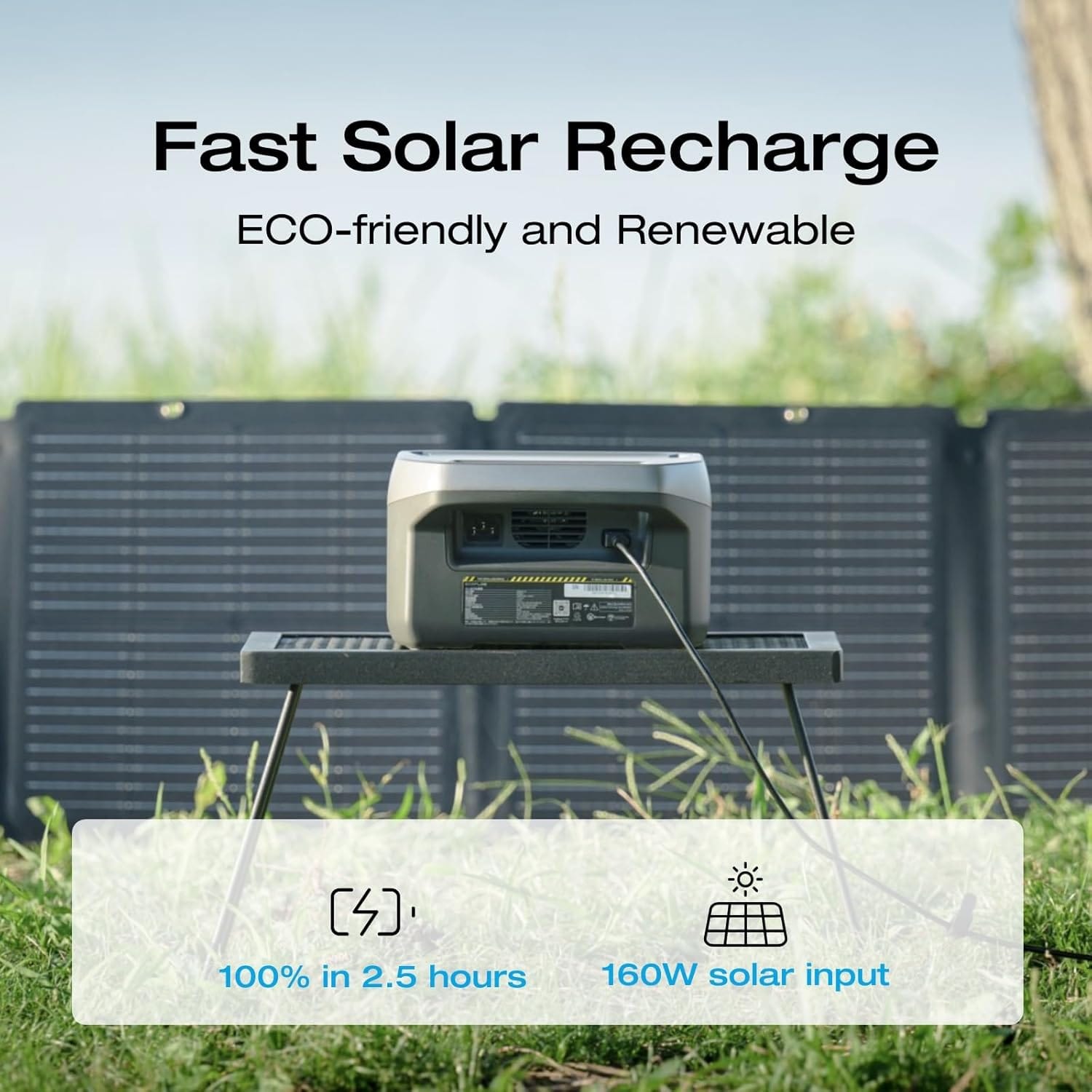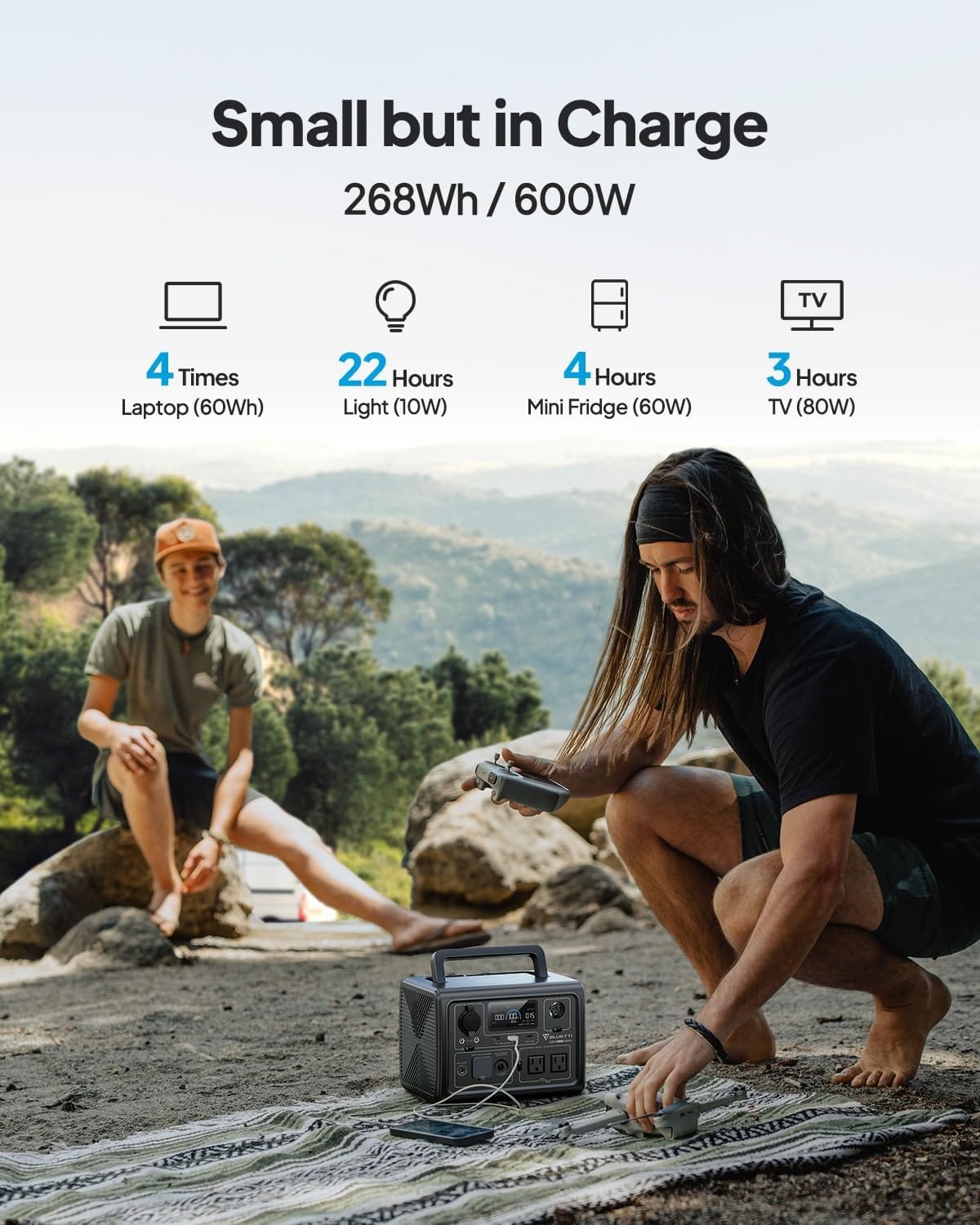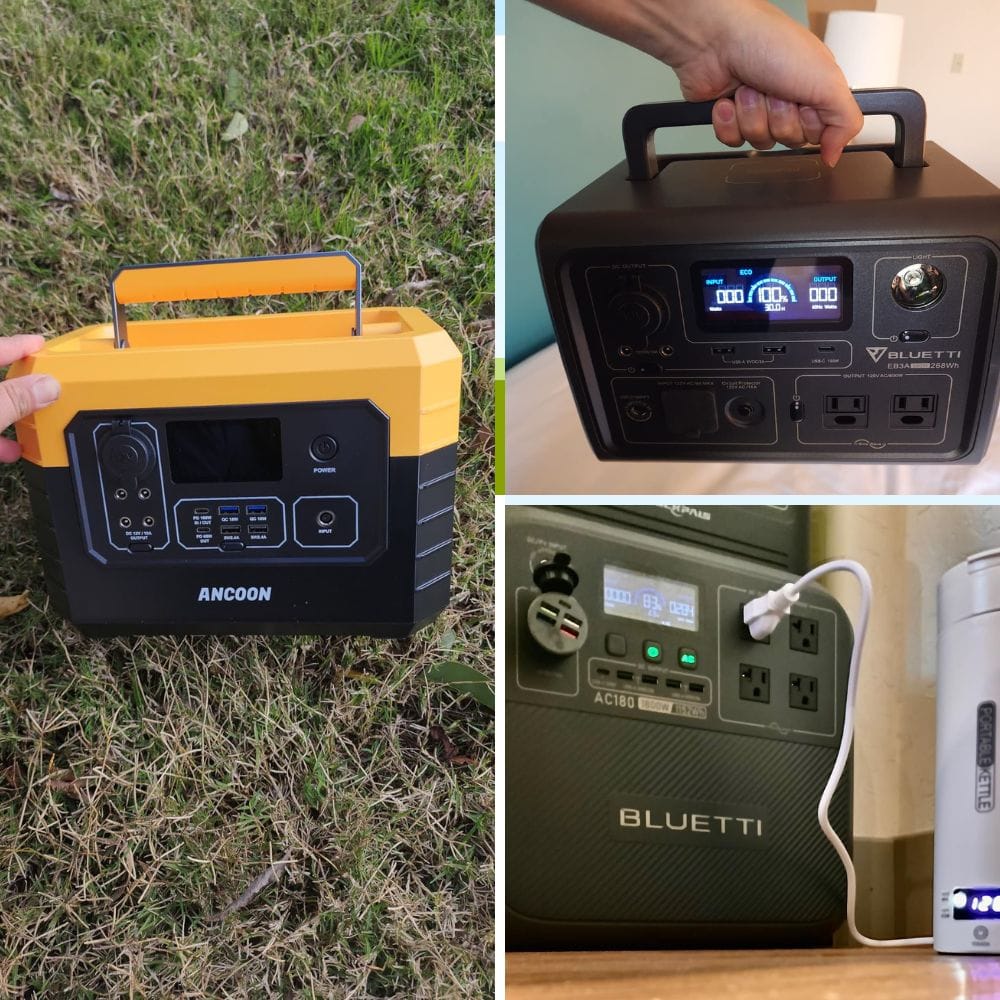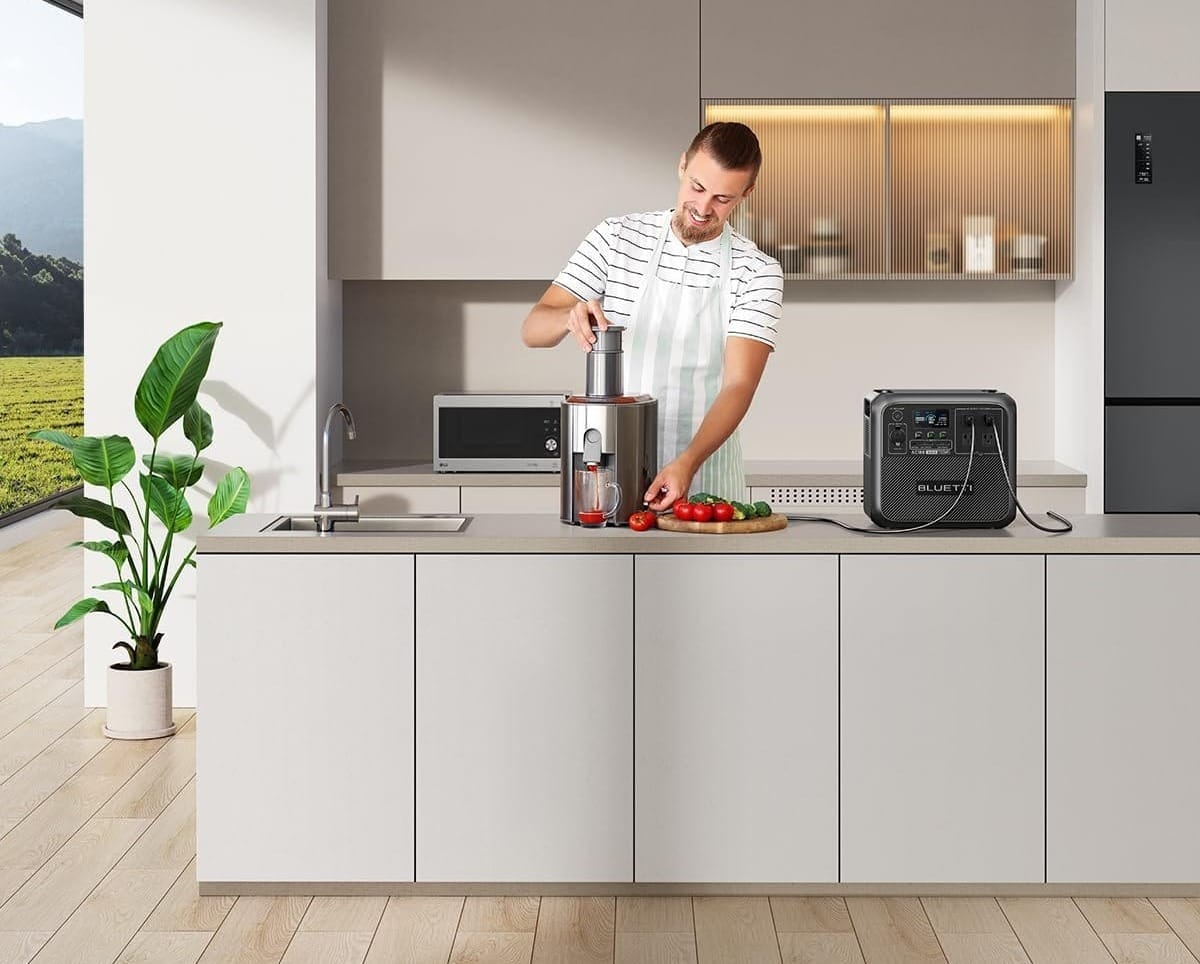Key Takeaways:
- Portable power stations can power refrigerators, but understanding power requirements is crucial.
- Battery capacity and inverter efficiency are key factors in determining compatibility.
- Proper usage and maintenance can extend the lifespan of both the power station and refrigerator.
Understanding Portable Power Stations

Portable power stations are versatile devices designed to provide electricity on the go. They are essentially large batteries equipped with various output ports, allowing users to power multiple devices simultaneously. These stations are particularly useful during power outages, camping trips, or any situation where traditional power sources are unavailable. Their portability and ease of use make them a popular choice for those seeking reliable backup power solutions.
The core components of a portable power station include a rechargeable battery, an inverter, and multiple charging ports. The battery stores energy, the inverter converts stored DC power to AC power, and the ports allow for device connectivity. Understanding these components is essential when considering a portable power station for running a refrigerator, as each plays a critical role in the station's overall performance.
Refrigerator Power Requirements
Refrigerators are essential household appliances that require a continuous power supply to maintain their cooling function. The power consumption of a refrigerator is measured in watts, and this figure can vary significantly depending on the model and size. On average, a standard refrigerator may consume between 100 to 800 watts, with larger models requiring more power.
When considering a portable power station to run a refrigerator, it's important to know the starting and running wattage of the appliance. The starting wattage is typically higher due to the initial surge of power needed to start the compressor. Ensuring that the power station can handle this surge is crucial to avoid overloading the system.
Battery Capacity and Inverter Efficiency
The battery capacity of a portable power station is measured in watt-hours (Wh) and determines how long the station can power a device. For example, a power station with a capacity of 1000Wh can theoretically run a 100-watt device for 10 hours. However, real-world usage may vary due to factors such as inverter efficiency and power loss.
Inverter efficiency is another critical factor to consider. Inverters convert DC power from the battery to AC power for the refrigerator. This conversion process is not 100% efficient, and some energy is lost as heat. A high-efficiency inverter will minimize this loss, allowing the power station to run the refrigerator for longer periods.
Matching Power Station to Refrigerator
To determine if a portable power station can run a refrigerator, one must match the power station's output capacity with the refrigerator's power requirements. This involves checking both the starting and running wattage of the refrigerator and ensuring the power station can handle these demands. It's also important to consider the duration for which the refrigerator needs to be powered and choose a power station with sufficient battery capacity.
For instance, if a refrigerator requires 600 watts to start and 200 watts to run, a power station with a continuous output of at least 600 watts and a battery capacity of 2000Wh would be suitable for several hours of operation. This ensures that the power station can handle the initial surge and provide continuous power thereafter.
Importance of Pure Sine Wave Inverters

When selecting a portable power station for a refrigerator, opting for a model with a pure sine wave inverter is advisable. Pure sine wave inverters produce a smooth and consistent AC waveform, similar to the electricity supplied by the grid. This type of inverter is essential for sensitive electronics and appliances like refrigerators, as it ensures efficient and safe operation.
Modified sine wave inverters, on the other hand, produce a rougher waveform that can cause issues with certain appliances. Using a modified sine wave inverter with a refrigerator may result in inefficient operation, increased energy consumption, or even damage to the appliance. Therefore, investing in a power station with a pure sine wave inverter is a wise choice.
Charging Options and Flexibility
Portable power stations offer various charging options, enhancing their flexibility and convenience. Most models can be charged via AC outlets, solar panels, or car chargers, allowing users to replenish the battery in different environments. This versatility is particularly beneficial for those who rely on portable power stations during outdoor activities or extended power outages.
Solar charging is an eco-friendly option that leverages renewable energy. By connecting a solar panel to the power station, users can harness the sun's energy to recharge the battery. This method is ideal for long-term use in remote areas where traditional power sources are unavailable.
Maintenance and Longevity
Proper maintenance is essential to ensure the longevity and optimal performance of both the portable power station and the refrigerator. Regularly checking the battery's charge level and recharging it as needed can prevent deep discharges that may shorten the battery's lifespan. Additionally, keeping the power station clean and storing it in a cool, dry place can help maintain its efficiency.
For refrigerators, routine maintenance includes cleaning the coils, checking the door seals, and ensuring proper ventilation. These practices can improve the refrigerator's efficiency and reduce its power consumption, making it easier for the power station to sustain its operation.
Real-World Examples

Consider the case of a family using a portable power station during a camping trip. They brought along a compact refrigerator to store perishable food items. By selecting a power station with a capacity of 1500Wh and a pure sine wave inverter, they were able to keep the refrigerator running smoothly for the entire weekend. This setup provided peace of mind and convenience, allowing them to enjoy their trip without worrying about food spoilage.
Another example involves a homeowner using a portable power station during a power outage. With a power station capable of delivering 2000 watts and equipped with solar charging capabilities, they managed to keep their refrigerator running for several days. This not only preserved their food but also demonstrated the power station's reliability and versatility in emergency situations.
Environmental Considerations
Using a portable power station to run a refrigerator can have environmental benefits. By opting for solar charging, users can reduce their reliance on fossil fuels and decrease their carbon footprint. This sustainable approach aligns with the growing trend of eco-conscious living and contributes to a cleaner, greener planet.
Moreover, portable power stations produce no emissions during operation, making them an environmentally friendly alternative to traditional gas-powered generators. This feature is particularly advantageous in areas with strict noise and pollution regulations, where silent and clean energy solutions are preferred.
Cost Considerations
The cost of a portable power station varies depending on its capacity, features, and brand. While high-capacity models with pure sine wave inverters may have a higher upfront cost, they offer greater reliability and efficiency for running appliances like refrigerators. It's important to weigh the initial investment against the long-term benefits and potential savings from reduced energy consumption.
Additionally, considering the cost of solar panels for charging can impact the overall budget. However, the ability to harness free solar energy can offset these costs over time, making it a worthwhile investment for those seeking sustainable power solutions.
Safety Precautions
Safety is paramount when using a portable power station to run a refrigerator. Users should ensure that the power station is placed on a stable surface and away from flammable materials. Proper ventilation is also crucial to prevent overheating and ensure safe operation.
It's important to follow the manufacturer's guidelines for charging and usage to avoid damaging the power station or connected appliances. Regularly inspecting the power station for signs of wear or damage can help identify potential issues before they become serious problems.
Technological Advancements
The technology behind portable power stations is continually advancing, leading to more efficient and powerful models. Innovations such as lithium-ion batteries, smart inverters, and advanced charging algorithms have improved the performance and reliability of these devices. As technology progresses, portable power stations are becoming more accessible and affordable for a wider range of consumers.
These advancements also contribute to the development of more compact and lightweight models, enhancing portability without sacrificing power. This evolution makes portable power stations an increasingly attractive option for those seeking flexible and reliable power solutions.
Choosing the Right Model

Selecting the right portable power station involves considering factors such as power capacity, inverter type, charging options, and budget. It's important to assess the specific needs and usage scenarios to determine the most suitable model. Consulting reviews and expert recommendations can provide valuable insights into the performance and reliability of different models.
For those who prioritize eco-friendliness, choosing a model with solar charging capabilities and a high-efficiency inverter can align with sustainable living goals. Ultimately, the right choice will depend on individual preferences and requirements.


Can a portable power station run a refrigerator continuously?
Yes, a portable power station can run a refrigerator continuously, provided it has sufficient battery capacity and output power to meet the refrigerator's requirements. It's important to consider the starting and running wattage of the refrigerator and choose a power station that can handle these demands.
How long can a portable power station power a refrigerator?
The duration a portable power station can power a refrigerator depends on the station's battery capacity and the refrigerator's power consumption. For example, a power station with a capacity of 2000 Wh can run a 200-watt refrigerator for approximately 10 hours, assuming no energy loss.
Is it safe to use a portable power station with a refrigerator?
Yes, it is safe to use a portable power station with a refrigerator, especially if the power station has a pure sine wave inverter. This ensures efficient and safe operation of the refrigerator. Following safety guidelines and proper maintenance can further enhance safety and performance.

Portable power stations offer a practical solution for running refrigerators in various situations, from camping trips to power outages. By understanding the power requirements of the refrigerator and matching them with the power station's capabilities, users can ensure efficient and reliable operation. Key factors such as battery capacity, inverter efficiency, and charging options play a crucial role in determining compatibility and performance.
Investing in a portable power station with a pure sine wave inverter and solar charging capabilities can enhance its versatility and environmental benefits. Proper maintenance and safety precautions can extend the lifespan of both the power station and refrigerator, providing peace of mind and convenience.











